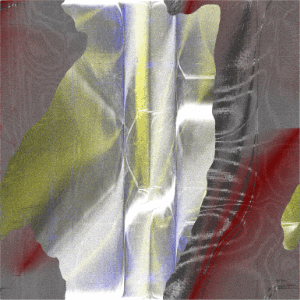
(February 2010) With the dawn of the twentieth century came a new way of looking at the human condition. The death of Queen Victoria was not just the demise of another British monarch, it symbolised the beginnings of a global change that would see political, social, economic, cultural and artistic change.
In many respects World War I can be seen of the culmination of this worldwide desire for a modern adjustment, with the powers of old desperately trying to keep a grip on the reigns of power. By the end of perhaps the most gruesome war in man’s history Europe lay in ruins, as did people’s perceptions of humanity and existence. New arts movements sprung up across the planet in response to the horrors that lay across the meadows of mainland Europe. It was felt by many that the old must be stripped away, that it was irreparably corrupted and that a new model must be put in place. Artists, musicians, film makers, dramatists and architects all had their interpretation of this model. Perhaps it is the latter group that found the most cohesive agreement as to what their new standard would look like. The ornate of old would be stripped back and function would now be paramount to form. The decadence of decoration was to be replaced with the divinity of the direct. Concrete, glass, steel and plastics were the tools of this new minimal form. Walter Gropius and his Bauhaus movement were at the coal face of this movement, believing that all aspects of the past styles were corrupted. Bauhaus saw all aspects of design as tainted with the failings of history and sought to produce a new machine for living in, one of clean lines and stark space. The movement was quashed by the Nazi’s when they came to power in the 1930’s, with Gropius’ style being dubbed as “degenerate” in comparison to Hitler’s desire for a pastoral modernism. Nevertheless, the style did find a number of takers and became, literally, the building blocks of the modern megacity. However, many contemporary commentators see the modernist architectural movement as somewhat of a golden calf. In many respects, the fervor of the modernists and their vision of the home as a machine created a new generation of alienation. Families found themselves removed from centuries of low rise living and placed in bland towers of concrete and steel. Social problems exist to this day in many of the blocks built to serve the burgeoning working class population, and in many respects these monoliths have become emblematic of the social, economic and political wrongs of the world. Yet there is something undeniably noble and avant garde in Gropius’ vision for a new world, and Roland Sebastian Faber and Aube Records would like to give a few notes to the Bauhaus movement with their new EP: Gropiusstadt.
The three tracker opens with “Löffelkinder;” The track reverberates into being on a beam of synthesizer sound. Roland Sebastian Faber signature sound it there, a difficult to pin down form that no other artist really has. In his last EP, Molecular, Roland Sebastian Faber had began to introduce guitar aspects into his work. Likewise “Löffelkinder” sees the return of strings, this time accompanied by soaring primal vocals. The track comes together as a warm collage that melts synthlines and strings into a sonorous and epic landscape. Arching rays of analogue sound introduce the title track, translated into Gropius City (in many respects the dream of the Bauhaus movement.) The chords have a retro futuristic feel to them as Roland Sebastian Faber returns with guitar strings the gape and float over the electronics, quite reminiscent to his “Eisengard” piece. Like its predecessor, the track has an epic quality to it. Gropiusstadt almost borders the line of soundtrack, but just keeps out of Metropolis limits. The EP ends with “Morgengrau,” a title perhaps playing on the concrete coloured dawn that arrived with the notion that less is more. The track follows its predecessors, lulling analogue chords with some wonderful shafts of sound streaming across clean beats. A beautiful piece to end on.
Unlike the Bauhaus movement, Roland Sebastian Faber is not afraid to delve into the past for his inspiration. The record does not reflect the pared back dream that Gropius had, but it does mirror the zeal and ambition that the Bauhaus students had. Gropiusstadt is a rich, textured work of electronics. Embedded in the grooves is the passion and hope of modernist architects, imparted through 1970’s style synthesizer warmth and considered strings. Some argue that the modernist experiment was a failure, Roland Sebastian Faber’s Gropiusstadt is the polar opposite. Aube have really produced a triumph in this release, a work combining electronix, soundtrack and disco influences into a new age work.
Gropiusstadt is out now on Aube. [Purchase]















![Luke’s Anger :: Ceiling Walker EP (Love Love) — [concise]](https://igloomag.com/wp/wp-content/uploads/2025/04/lukes-anger-ceiling-walker-vinyl_feat-75x75.jpg)

![Ndorfik & madebyitself :: Solos EP (People Can Listen) — [concise]](https://igloomag.com/wp/wp-content/uploads/2025/04/ndorfik-madebyitself-solos_feat-75x75.jpg)




